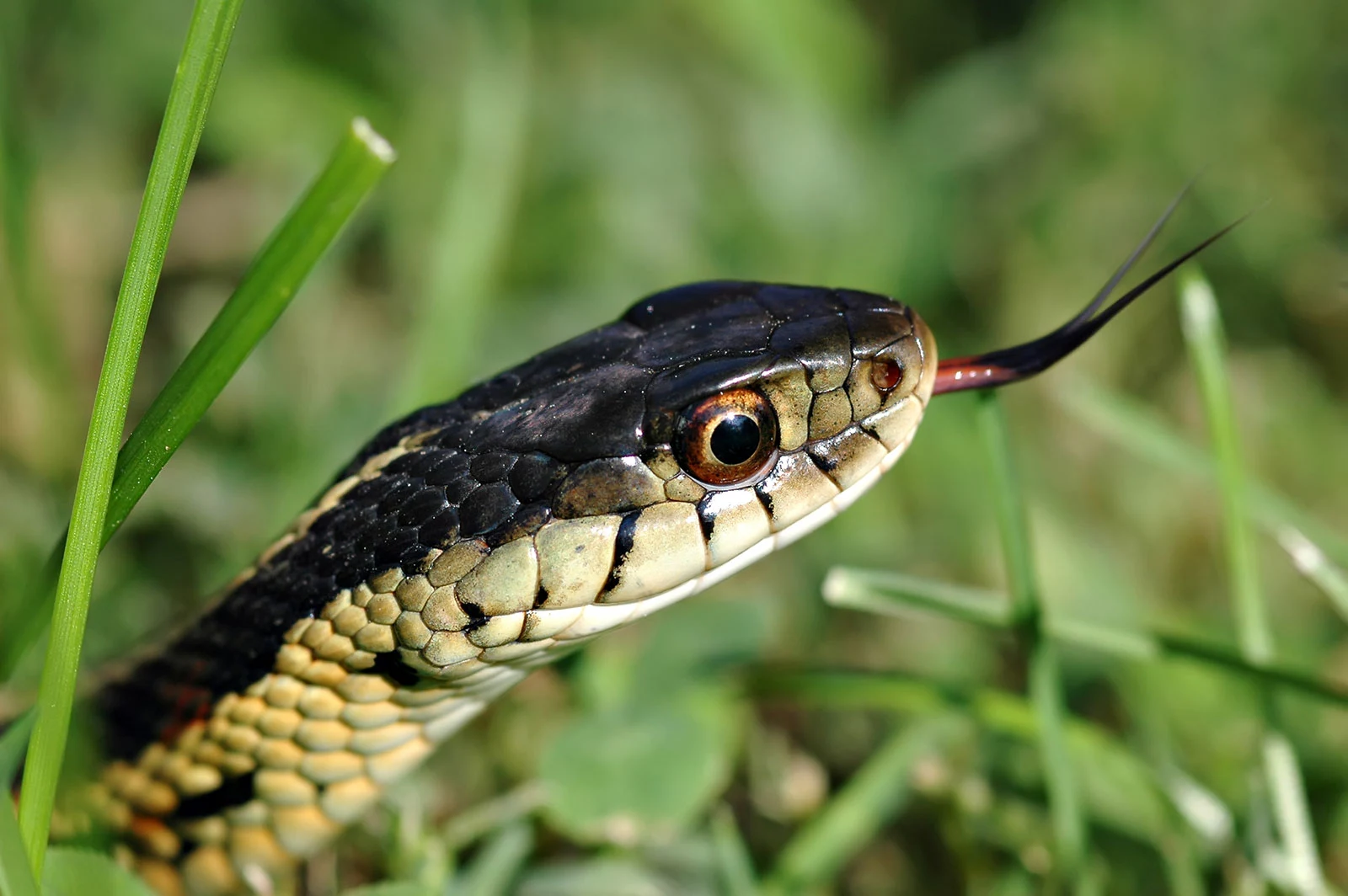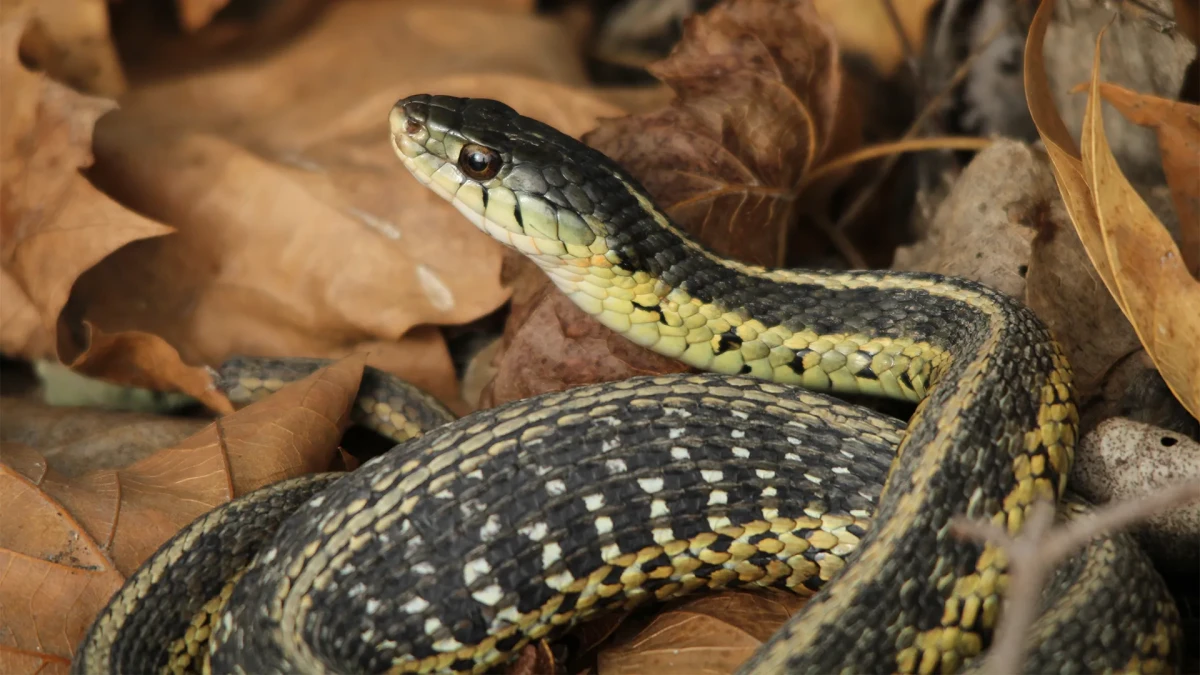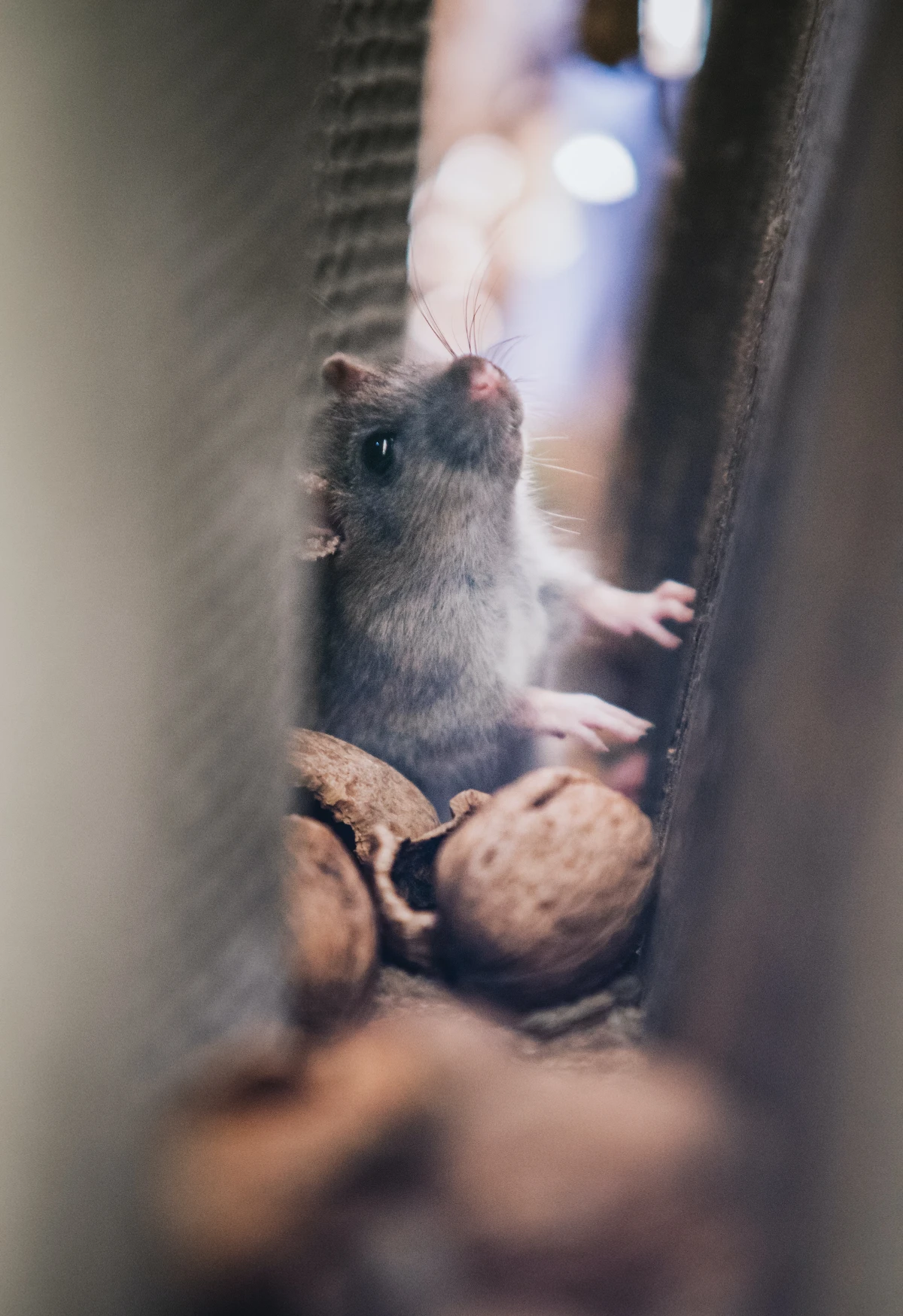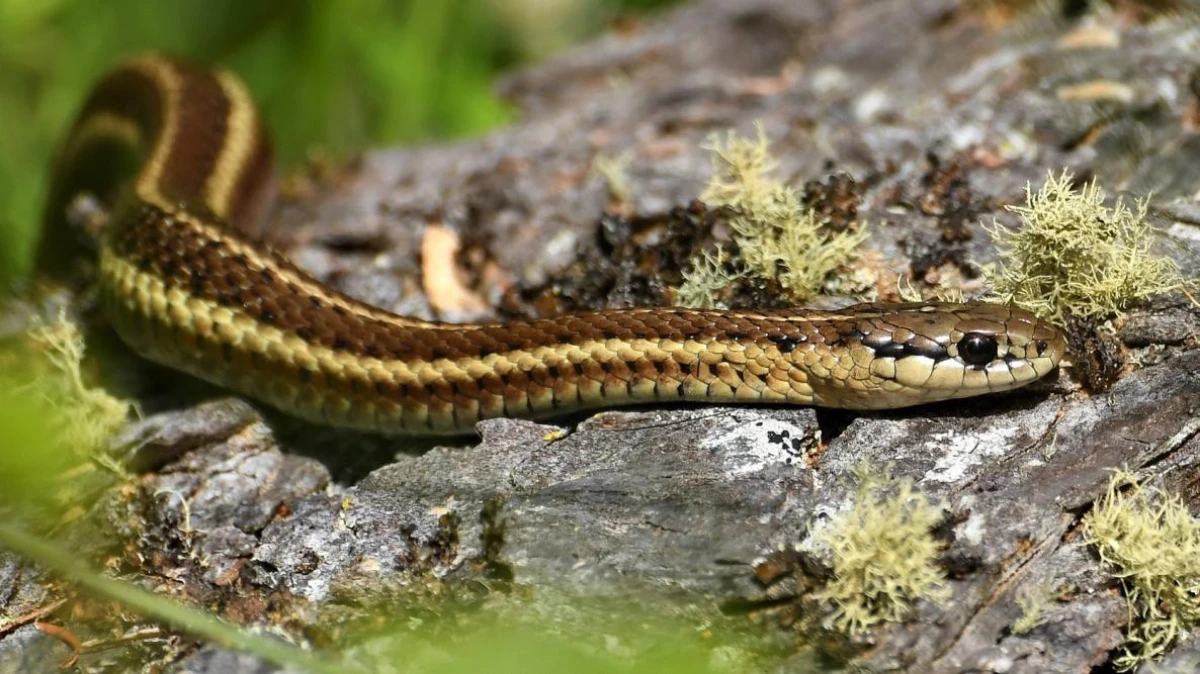Snakes in Your Yard? Here’s What Actually Works (and What’s a Waste of Money)
I’ll never forget one of my first calls for a snake problem. A family was absolutely beside themselves. They’d seen a big black snake near their porch a few times and, in a panic, had rushed to the hardware store. They’d sprinkled a white, mothball-smelling powder all around their foundation, hoping to create some kind of magic forcefield.
In this article
- Snake Inside? What to Do Right Now
- So, Why Are They in Your Yard in the First Place?
- The Pro’s Method: Make Your Yard Boring for Snakes
- Starve Them Out by Cutting Off the Food Supply
- Seal the Deal: Block Every Possible Entry Point
- Don’t Waste Your Money: The Truth About Repellents
- When to Call for Backup (Your Safety Comes First)
- A Final Thought: It’s About Coexistence, Not War
- Inspirational Gallery
Of course, the snake didn’t care. It was just enjoying the cool, dark space under their deck and the buffet of mice living there. That day taught me the single most important lesson in wildlife control: you don’t manage snakes by trying to scare them. You manage them by figuring out what they want and then taking it away.
Snakes aren’t evil; they’re just practical. They’re driven by three simple needs: food, shelter, and the right temperature. Your property isn’t a home to them, it’s a gas station with a good snack bar. My job is to help you make it a place they just pass on by. This isn’t about getting rid of snakes entirely—they’re fantastic at controlling rodent populations. It’s about setting boundaries and making the area right around your house an unappealing place for them to hang out.

Snake Inside? What to Do Right Now
Okay, before we go any further, let’s address the elephant in the room (or, well, the snake). If you have a snake inside your house right now, here’s the immediate plan:
First, don’t panic. The snake is more scared of you than you are of it. If possible, safely get pets and kids out of the room. Second, close the door to that room to contain it. Then, shove a towel under the door to block the gap. Now, with the situation contained, call a professional wildlife control operator. Seriously. This is not the time for DIY heroics. A pro can remove it safely and help you find out how it got in. Expect a visit like this to cost somewhere between $150 and $400, depending on where you live and how complex the situation is.
So, Why Are They in Your Yard in the First Place?
To solve the problem, you have to think like a snake. They’re cold-blooded, which means their whole day is about managing their body temperature and finding food. This basic fact explains pretty much everything they do.

- Shelter is Everything: Snakes hate being out in the open where hawks and other predators can spot them. Their number one priority is cover. Think tall grass, overgrown shrubs, firewood piles, rock walls, leaf litter, and the gaps under your shed or deck.
- The All-You-Can-Eat Buffet: If you have snakes, you almost certainly have snake food. This means mice, voles, rats, chipmunks, frogs, and even big insects. That bird feeder spilling seed on the ground? It’s a rodent magnet, which makes it a snake dinner bell.
- A Place to Warm Up or Cool Down: A sun-drenched driveway or a large, flat rock is the perfect spot for a snake to warm up in the morning. On the flip side, a cool crawlspace or a damp crack in a foundation offers relief from the midday sun.
- Watering Holes: Like any animal, snakes need a drink. Leaky outdoor faucets, bird baths, ponds, and even the dog’s water bowl can be a big draw.

The Pro’s Method: Make Your Yard Boring for Snakes
If you only do one thing, do this. The most effective, long-term way to reduce snakes is to make your landscape a place they want to avoid. I call it ‘defensive landscaping,’ and it’s all about keeping things clean and open.
Your lawn is your first line of defense. A short, neat lawn is a terrifying place for a snake—it’s like walking across a giant, empty parking lot with a hawk circling overhead. I recommend keeping your grass mowed to about 3-4 inches. Any shorter can stress the grass, but taller gives them a place to hide.
Next, it’s time to declutter. This is where I find snakes 90% of the time. Walk your property and look for anything that creates a dark, safe hiding spot.
- Wood Piles: A classic mistake. Never, ever stack firewood directly on the ground or against your house. It’s a 5-star hotel for both rodents and snakes. Get a raised rack (they’re about $40-$80 online) that keeps the wood at least a foot off the ground and place it away from the house.
- Rock Piles & Walls: That rustic, loose-stone wall might look nice, but it’s snake heaven. If the pile is just for decoration, consider removing it. For structural walls, seal any large gaps with mortar to eliminate the cozy hiding spots inside.
- Yard Debris: Piles of leaves, grass clippings, and old lumber are basically a welcome mat. A good seasonal cleanup each spring and fall makes a huge difference.
- Compost Piles: They’re warm and full of bugs—very attractive. If you compost, use a fully-contained bin instead of a loose pile, and keep it away from your foundation.
Heads up! The 3-foot zone around your home’s foundation is critical. Avoid dense ground covers like ivy or juniper right up against the house. They create a hidden highway for pests. A much better choice is a border of gravel or river rock. It’s clean, drains well, and gets hot in the sun, which snakes will often avoid.

Starve Them Out by Cutting Off the Food Supply
A snake will not hang around a place with no food. It’s just that simple. A lot of my snake management work is actually rodent management in disguise.
I can usually tell where a client is seeing snakes just by finding their bird feeder. Spilled seeds attract rodents, and rodents attract snakes. If you love feeding birds, get a “no-mess” feeder with a tray to catch the seeds and place it out in the open, away from the house. Oh yeah, and store your birdseed in a sealed metal can. I’ve found more than one snake in a garage hunting the mice that were feasting on seed from a chewed-through paper bag.
If you see signs of mice or rats, deal with that problem first. Use traps or secure, professional-grade bait stations. Be careful with poisons, though, as they can harm predators that eat the poisoned rodent. For a serious infestation, it’s always best to call a licensed pest control pro.

Seal the Deal: Block Every Possible Entry Point
Once the yard is less inviting, you need to make sure your house is Fort Knox. A mouse can squeeze through a dime-sized hole, and a small snake needs even less space. It’s time for an inspection.
Your Quick Hardware Store Checklist:
- 1/4-Inch Galvanized Hardware Cloth: This sturdy metal mesh is your best friend.
- High-Quality Silicone Caulk: For sealing small cracks and gaps.
- Copper Mesh: Great for stuffing into medium-sized holes before caulking (rodents hate chewing it).
- Tin Snips: To cut the hardware cloth easily.
- A Good Flashlight: For finding those sneaky little gaps.
Walk around your foundation and look for any cracks or holes, especially where the siding meets the foundation. Check where every pipe, wire, and vent enters your house—this is the number one entry point. Use caulk for small gaps and stuff larger ones with copper mesh before sealing.

Quick Tip: How to Cover a Vent (The 5-Minute Fix):
Got a dryer vent or crawlspace vent that’s wide open? Grab your hardware cloth. Just measure the vent, cut a piece of mesh that’s an inch bigger on all sides, and then use a drill to screw it securely over the opening. Done. You just permanently blocked a major entry point.
And for your single best quick win? Go look at the rubber seal on the bottom of your garage door right now. If you can see daylight under it, you’ve got a superhighway for mice and snakes. Replacing that seal costs about $20 at a home improvement store and is probably the most effective thing you can do today.
Don’t Waste Your Money: The Truth About Repellents
I feel like it’s my duty to be brutally honest here. Most commercial snake repellents are a complete waste of money. I say this based on years of fieldwork and what every snake expert will tell you.

Let’s bust a common myth. The idea that mothballs (naphthalene) or sulfur powders repel snakes is just that—a myth. I’ve seen snakes crawl right over these products without a care in the world. Worse, using these chemicals outdoors can be an illegal use of a pesticide, contaminating your soil and water. The same goes for scent-based products with cinnamon or clove oil. They might annoy a snake for a moment, but they wash away with the first rain and do nothing to solve the root problem.
Snake fencing, by the way, can work, but it’s a serious and expensive project. We’re talking a solid or mesh fence that’s at least 3 feet high, buried 6 inches in the ground, and angled outward at the top. For most homes, focusing on habitat modification and exclusion is far more practical and affordable.
When to Call for Backup (Your Safety Comes First)
This is the most important part. Unless you are a trained expert, do not try to handle, trap, or kill a snake. A huge percentage of bites happen when people try to mess with the animal. A cornered snake, venomous or not, will defend itself.
It’s also crucial to know what you’re dealing with. Your state’s Fish and Wildlife or university extension website is a great place to start. For example, the University of Florida has a fantastic online guide to snake identification. Look for resources specific to your region. But remember the golden rule: if you are not 100% sure what it is, assume it’s venomous and keep your distance.
Make the call to a pro if:
- You find a snake inside your house.
- You think the snake on your property might be venomous.
- You’ve cleaned up your yard but still have a persistent problem.
- You have small kids or pets and just want peace of mind.
A professional has the right tools, training, and insurance to handle the situation safely and legally (many snakes are protected!). It’s the smart, safe choice.
A Final Thought: It’s About Coexistence, Not War
My goal isn’t to wage a war on nature; it’s to create a peaceful boundary between our homes and the wild world. By methodically taking away the food and shelter they’re looking for, you encourage snakes to stay in the woods and fields where they belong. A clean, well-sealed property is the only snake “repellent” that has ever truly worked for me and my clients. It’s not a quick fix from a bottle, but it’s a long-term solution that actually works.
Inspirational Gallery
A single black rat snake can consume dozens of rodents in a season, providing more effective, non-toxic pest control than any commercial product.
This insight, often shared by herpetologists at university wildlife extensions, reframes the snake’s presence. Instead of a threat, view a non-venomous snake as a free, highly efficient pest control service. They are a sign that you have a rodent issue, and they are actively working to solve it for you.
When landscaping near your foundation, the material you choose can make a big difference in deterring snakes.
Wood Mulch: Tends to retain moisture and cool temperatures, creating an ideal hiding spot. It also attracts insects, slugs, and worms, which are food for smaller snakes.
Gravel or River Rock: Dries out quickly, offers poor cover from predators, and can get uncomfortably hot in direct sun. Snakes are less likely to linger on these surfaces.
For a snake-resistant zone, a two-foot-wide border of gravel around your home is far more effective than mulch.
- Keep compost piles far from the house.
- Store firewood on a rack at least 18 inches off the ground.
- Clean up spilled birdseed daily to avoid attracting rodents.
- Eliminate piles of leaves, stones, or lumber.
The goal? Remove the
Can a special fence actually keep snakes out of a specific area, like a playset or garden?
Yes, but it requires a very specific design. A standard chain-link or privacy fence is easily bypassed. Effective snake fencing must be made of solid sheeting or 1/4-inch galvanized hardware cloth. It should be at least 30 inches tall, buried 4-6 inches into the ground, and angled outward at the top to prevent climbing. While costly, it is one of the most reliable physical barriers available.
The most dangerous mistake: Assuming you can correctly identify a snake and trying to handle or kill it. Many harmless species, like the Eastern Hognose, are masters of disguise and will flatten their heads to mimic a venomous viper when threatened. The safest and smartest rule is universal: if you see a snake, give it space and leave it alone.
The long-term fix for snakes is to physically block their entry points. Think like a mouse—if a rodent can get in, a small snake can often follow. Grab a flashlight and inspect your home’s perimeter for these common entry points:
- Gaps around utility pipes (water, gas, and AC lines).
- Cracks or holes in the foundation masonry.
- Unscreened vents for the crawl space or attic.
- Gaps under the garage door seal.
Use expandable foam like Great Stuff and 1/4-inch hardware cloth to seal these vulnerabilities for good.
Fact: Snakes don’t have external ears and can’t hear airborne sounds, but they
For homeowners with pets, vigilance is key. Keep your lawn mowed short to improve visibility for both you and your animals. When walking dogs, use a short leash to prevent them from sticking their curious noses into dense brush, rock piles, or holes where a snake might be resting. A startled snake’s defensive strike is often a reaction to being cornered by a curious pet.
The sticky, inhumane glue trap is a particularly cruel and ineffective method for dealing with snakes. It causes a slow, agonizing death for the snake and indiscriminately captures any other creature that wanders by, including lizards, birds, and beneficial insects. Professionals universally advise against their use outdoors for this reason.










